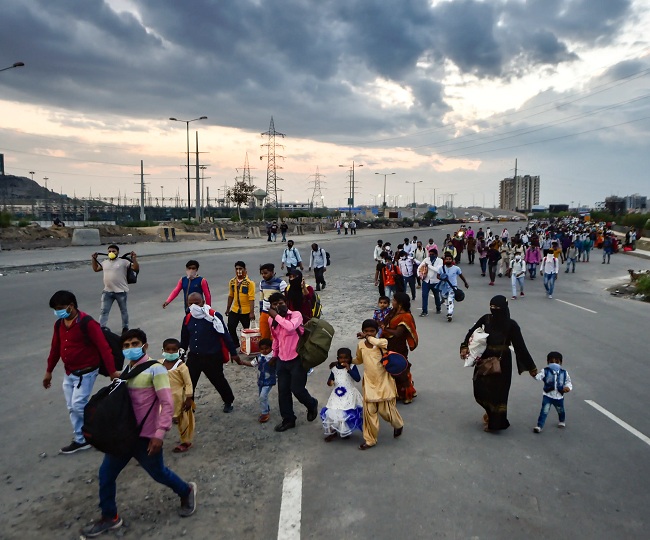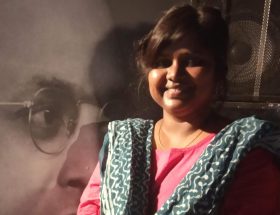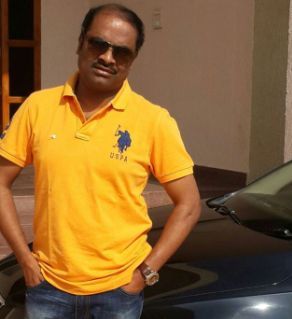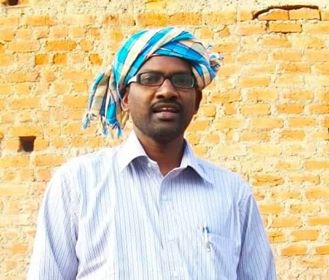Shailaja Menon and N. Sukumar
In the past several weeks, scenes reminiscent of Partition has flooded our collective consciousness; men, women and children clutching their meager possessions, desperate to avail any means of transport and reach home. A tribal girl, Jamlo Makdam1 died on the arduous trek from Telangana to her village in Chattisgarh. The Child Protection Council never investigated as to why she was forced to work in the chilly fields instead of being in school. Does she not qualify to be a daughter of ‘Bharat’? The mangled bodies of migrant labourers, chapattis strewn on the railway tracks bear silent testimony to the unfolding tragedy2. The bodies of migrant workers who were killed in Uttar Pradesh’s Auraiya road accident last week were stuffed in a truck with other workers and sent to West Bengal and Jharkhand3. Till date, 139 migrants have lost their lives in various accidents in a bid to reach their homes4. Their fate is to die unwept, unhonoured and unsung. God forbid, with all due respect, if so many soldiers had died, one can imagine the patriotic uproar. Not surprisingly, the ‘nation does not want to know’5 who has blundered in creating this horrendous calamity. The nation’s ‘chowkidaar’ has abandoned his most marginalized people. There is no Aarogya Setu App to take care of the needs of the migrants.

It is only a few months ago that the entire country was convulsed trying to make sense of the Act to determine citizenship status. Campuses were in turmoil, women were on the streets, there were violent outbreaks and the ordinary person was forced to look over their shoulder and see whether Big Brother was watching. The sudden eruption of the Corona pandemic has forced us to recede into a ‘lakshman rekha’ and wage a war for survival. For the well fed and well housed citizen, the state has arranged the re-runs of Ramayana and Mahabharata. For further entertainment, we can binge watch digital platforms or even videos of celebrities doing their ‘bartan, jhadoo pocha’. There were pious pronouncements by the political class that we should be generous and neighbourly with our fellow beings. People like us adjusted to the new normal, online classes, innovative exercise routines, coping with pandemic induced depression etc. Many men took pride in helping out with the domestic chores.
Many amongst us assumed that the enforced lockdown will defeat the virus and then life will go on as usual. Unfortunately, one category of ‘citizens’ is caught between the devil and the deep sea. For the scores of laboring people, it’s a choice between the disease and hunger. Despite dismal living conditions, they continued to work. With the economy under lockdown, for a daily wage earner, it means empty stomachs. Once their paltry resources give out, they have few resources to survive. The disturbing visuals of labourers protesting in various cities, beseeching for aid reflect the underbelly of the development agenda.
Dream Destinations
For several years post independence, Mumbai, Kolkata and Delhi were considered hotspots for employment. Gradually, the southern states of India rapidly developed due to better investment in quality education, infrastructure, health, industrial growth and eventually the IT sector. Among the six largest metropolitan cities, Hyderabad saw the biggest inflow of migrants in the 2001-11 period, followed by Chennai and Bengaluru6. Unfortunately, the BIMARU states remained mired in caste and communal politics and the social sector was ignored no matter which political party was in power. The politics of hate overshadowed governance. The special trains overflowing with migrant labour desperate to reach back to their native villages in North India speak volumes about the uneven development that leads to poverty and unemployment and eventually migration. During the present crisis, the Kerala government was compelled to set up call centres to communicate with the migrants in their native languages. Those manning the lines could speak five languages — Hindi, Bengali, Odia, Assamese and Garwahli. Kerala has the highest number of state-run relief camps for migrant workers. The state has 18,912 camps that house over 3 lakh migrant workers. Uttar Pradesh is a distant second with 2,230 government-run camps while Maharashtra is third with 1,135 relief centres, according to data submitted by the Home Ministry to the Supreme Court on 8 April 20207.
The Hindi belt is the main source of migrant labour. Nearly 70 to 80 percent of labour who left Dharavi (Mumbai), a sprawling slum of about 8.5 lakh people packed into a geographical area of 2.4 square kilometer, were single men of all ages, with impoverished families in Bihar, Uttar Pradesh and Jharkhand8. According to the 2011 census, four states- Uttar Pradesh, Bihar, Rajasthan and Madhya Pradesh accounted for 50% of India’s total inter-state migrants. On the other side, Maharashtra, Delhi, Gujarat, Uttar Pradesh and Haryana housed 50% of the country’s inter-state migrants. These shares are much higher than the share of these states in India’s total population9. The southern states are also plagued by socio-economic issues. However, despite all odds, the stress is on improving the overall quality of life.
The Corrosive Visual of Politics
In contemporary times, politics is all about visuals and the spectacular. When PM Modi gravely sermonizes about being self reliant (aatma nirbhar) and that ‘local is global’, how India gifted Yoga to the world, our chest puff up to ’56 inches’ with pride. To salvage the situation, the state has announced crores of rupees packages to revive the economy but conveniently shortchanged the hands that work to drive the wheels of commerce. For the political class and the privileged classes, the image that emerges of the worker is hazy, faceless lacking any human semiotics. “Home” exists for the tax payers. The wretched of the earth have no claims to a “home”. How can a kaamwali bai or a casual labourer assert his or her agency and say that “we need to go home for our families are there”. A stage show that unfolded in Karnataka with the workers being prevented from leaving as the real estate sector required their labour10. The trains from Bengaluru were cancelled only to resume after a public protest. It’s evident that the state is batting for the capitalist class. The Vande Bharat Mission is for NRIs who will fill the stadia for Howdy Modi. Many of them comprise the IIT bred techies who have sold their labour to the multinationals. Where does a poor migrant, who gains importance only during elections stand amidst such glorious statistics? If we take away the mask and remove the shroud of anonymity, the majority of the migrant labour comprises the dalit-bahujans, women, Muslims and tribals who exist on the peripheries of society. What happened to the promise that was made on April 27, 2017 by the Honorable Prime Minister11 that his dream is to see ‘hawai chappals in hawai jahaj’. It’s another matter that the suited booted citizens are flying back in special flights whereas the hawai chappals are flooding the national highways.
Such blatant disregard for human values was only to be expected from a neo-liberal state which considers social welfare to be a term of abuse. However, the silence of many political leaders is very eloquent. The chief opposition party, the Congress wakes up intermittently to critique the ruling party. Many other leaders who play identity/ideological politics are merely paying a lip service than seeking to address the issue of denial of dignity to the vast majority of the citizens. Unfortunately, the Left oriented parties which seek votes in the name of the laboring masses are unable to reach out to their constituency.
The Baniya Sarkar
In a bid to kickstart the economy, labour laws are being diluted. In the first place, only spiritual labour was respected in a caste conscious society. The current epidemic has given the opportunity to the state to suspend even the minimum of safeguards due to the working class. The police, doctors and paramedical staff are scared of punitive action and silently work with faulty equipment to battle the disease12. A bureaucrat in Karnataka was transferred when he tried to motivate workers to lodge complaints against employers for non-payment of wages13. In order to augment revenue generation, the state has opened liquor shops with 65 to 70% increase. Not surprisingly, this has enhanced the cases of domestic violence which are being under-reported. Across the globe, fuel prices have crashed due to less demand during the pandemic. Only in India have the fuel prices been hiked which will have a cascading effect on consumer products. A month ago, the state was concerned for the health of its citizenry. Now it’s relying on apps to mount surveillance on people so that life can go on as usual. The Railways are charging the states for Shramik special trains and the latter are requesting the Central government to release the GST funds due to them. Meanwhile, the Government has withdrawn the order making wage pay mandatory during lockdown14. Effectively, the workers have been abandoned without any safeguards.
Whither Sabka Saath, Sabka Vikas?
What is more worrisome is that the constitutional bodies instituted to safeguard the rights of vulnerable citizens are existing in a limbo. The Central and State Human Rights Commissions take cognizance of individual cases but overlook the intensity of the problem. The Child Rights Protection Committee ignores the rights of migrant children to a safe and healthy environment. An entire generation of children of the migrant families has lost access to education. The digital divide is starker with privileged kids continuing their education through online classes and the deprived children enduring all the brutalities unleashed by an uncaring system. This effectively reduces their chances for upward mobility and they will remain trapped in low paying jobs15. The Women Commissions express concern about increasing domestic violence but are tight lipped about the laboring women who have lost their livelihoods and dignity in these troubled times. The SC/ST Commission which is supposed to protect the interests of the Scheduled Castes and Tribes has gone into hibernation. Even the last resort for the citizens, the judiciary is giving mixed signals. The Supreme Court has abdicated its responsibility16 towards the poorest ‘citizens’, whereas some of the State High Courts are more sensitive to such humanitarian issues17.
As argued by Judith Butler: “learning to mourn mass death means marking the loss of someone whose name you do not know, whose language you may not speak, who lives at an unbridgeable distance from where you live.” And the public mourning that is required in this moment also requires asking difficult political questions about the conditions that have structured the magnitude and disparities of the epidemic18. In an analysis published by Lancet, every year nearly 16 lakh Indians die due to poor quality care, 4300 deaths daily due to poor treatment. Some 2.4 million Indians die of treatable conditions every year, the worst situation among 136 nations19. Hence, was the lockdown more to protect the lives of the rich Indians at the cost of the livelihoods of the poor? Now the capitalist state and the privileged classes are feeling the heat of economic losses, else why should industries, shops and businesses be opened when the rate of infection and deaths are increasing? When the histories of the pandemic will be written, epithets like ‘aatma nirbhar bharat’ will be glorified by the court poets, but who will sing a requiem for Jamlo Makdam. The traumatized migrants do not wish to go back to the cities which turned its back to them. The only weapon they possess is the vote. The sole hope is that the migrants will prove to be a game changer in the coming elections in various states and should refuse to be swept away by vote bank promises. For a meaningful democracy to flourish in India, the discourse needs to be shifted from caste and communal politics to issues of public health, education and social security to ensure that future Jamlo Makdams are able to complete their schooling and not waste their childhoods in the chilly fields.
~
Notes
1. April 21, 2020
2. May 8, 2020, https://www.thehindu.com/news/national/other-states/16-migrant-workers-run-over-by-goods-train-near-aurangabad-in-maharashtra/article31531352.ece
3. Migrant workers travel with dead bodies of those killed in UP’s Auraiya, https://www.hindustantimes.com/india-news/migrant-workers-travel-with-dead-bodies-of-those-killed-in-up-s-auraiya/story-kFlKkHm7yrdiYWL2vsTdrN.html
4. Coronavirus lockdown: So far, over 130 migrants killed in accidents en route to their home states, https://indianexpress.com/article/india/coronavirus-lockdown-count-of-migrants-killed-in-accidents-enroute-their-home-states-6412475/ Also the Hindu, May 20, 2020
5. Arnab Goswami’s famous opening line during news broadcast at Prime Time on Times Now
6. Sriharsha Devulapalli, howindialives.com, Migrant flows to Delhi, Mumbai ebbing, https://www.livemint.com/news/india/migrant-flows-to-delhi-mumbai-ebbing-1568981492505.html
7. Shankar Arnimesh, Rotis, mobile recharges, carrom boards — how Kerala fixed its migrant worker anger, The Print, 18 April, 2020
8. Kavitha Iyer and Sadaf Modak, In Mumbai Slums, Signs of Exodus: Locked Doors, Empty Lanes, the Indian Express, May 19, 2020
9. Abhishek Jha and Vijdan Mohammad Kawoosa, What the 2011 census data on migration tells us, https://www.hindustantimes.com/delhi-news/migration-from-up-bihar-disproportionately-high/story-K3WAio8TrrvBhd22VbAPLN.html
10. To Appease Builders’ Lobby, Karnataka Cancels Trains for Migrant Workers, The Wire, 6th May, 2020, https://thewire.in/government/karnataka-trains-migrant-workers
11. https://www.youtube.com/watch?v=PAECxmYwx1Q, Shimla (Himachal Pradesh), Apr 26 (ANI): Prime Minister Narendra Modi on Thursday said that the government is committed to provide poor people an easy and economical way of travelling. PM Modi said that his government is working to develop 25 to 30 airports for commercial purposes
12. Vijayta Lalwani, When the doctors at the Patna Medical College raised their concerns with the administration last week, according to one doctor, the authorities told them: “Krantikari banne ki koshish mat karo.” Don’t try and become revolutionaries. https://scroll.in/article/958029/dont-be-revolutionaries-doctors-protesting-coronavirus-safety-gear-shortage-warned-by-hospitals, April 3, 2020
13. Bharath Joshi, Karnataka IAS officer Manivannan’s transfer raises eyebrows
www.deccanherald.com/state/top-karnataka-stories/karnataka-ias-officer-manivannans-transfer-raises-eyebrows-836480.html, May 11, 202014. Shishir Sinha, https://www.thehindubusinessline.com/economy/govt-withdraws-order-making-wage-pay-mandatory-during- lockdown/article31615879.ece?utm_source=udmprecommendation_economy&utm_medium=rightbar&transactionId=mmuoOAi8BO9naILWjrcSWmREV2k3Co0F, May 18, 2020
15. Ritika Chopra, Lessons from 2014: how school closures in West Africa impacted children, The Indian Express, Delhi, May 18, 2020.
16. Can’t stop or monitor movement of migrant workers on roads, says SC
https://www.thehindu.com/news/national/cant-stop-or-monitor-movement-of-migrant-workers-on-roads-says-sc/article31590649.ece, May 15, 2020
17. Cannot control tears… nothing but a human tragedy: Madras HC on migrants, the Indian Express, Delhi, May 16 2020
18. Judith Butler Interview with George Yancy, Mourning Is a Political Act Amid the Pandemic and Its Disparities, Truthout, April 30, 2020
19. Kalyan Ray, 4,300 Indians die daily due to poor hospital care,
https://www.deccanherald.com/opinion/panorama/4300-indians-die-daily-due-692128.html,
~~~
Shailaja Menon teaches History at the School of Liberal Studies, Ambedkar University, Delhi.
N Sukumar teaches Political Science in the Dept of Political Science, University of Delhi.
Picture courtesy: the internet.










